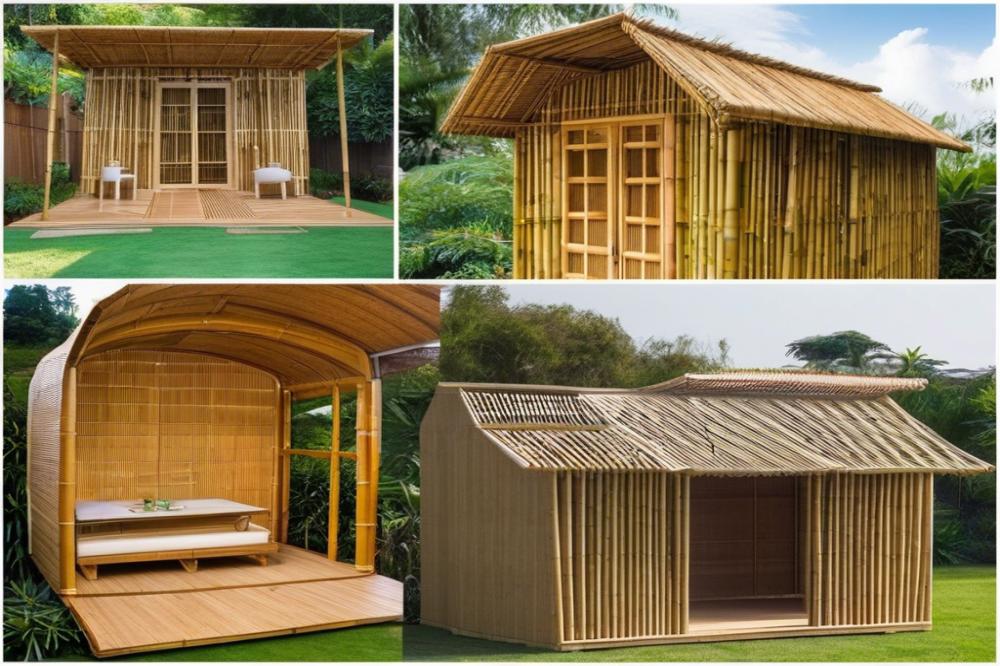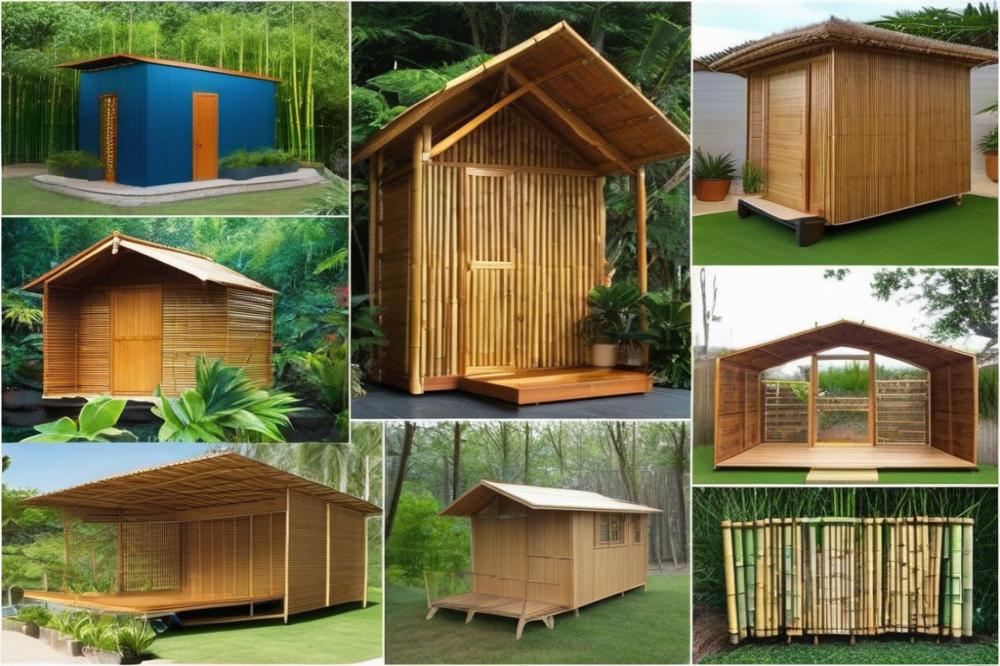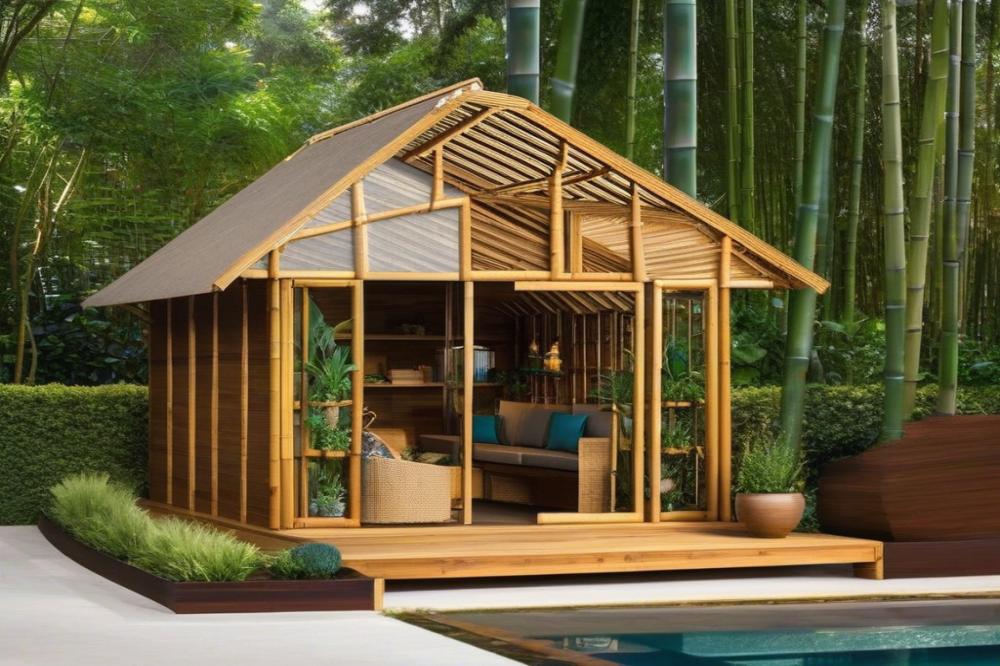Introduction
Building an eco-friendly shed is not just a trend; it’s a meaningful choice for many homeowners. eco-friendly materials play a crucial role in modern construction practices. Utilizing resources that cause minimal harm to the environment is important. By choosing sustainable options, builders can contribute positively to our planet.
Bamboo stands out as a promising building material among various sustainable resources. Its rapid growth makes it a renewable resource with many advantages. This natural building method offers great strength while maintaining flexibility. Additionally, bamboo adds a unique aesthetic that can enrich any outdoor space.
This article aims to serve as a practical guide on constructing your own bamboo shed. Readers will find shed building tips along the way. Embracing green architecture and sustainable design can lead to rewarding DIY projects. With this knowledge, you can create an outdoor storage solution that is both functional and environmentally friendly.
bamboo shed

A bamboo shed is a structure primarily made from bamboo, a versatile and resilient material. These sheds are popular for their strength and light weight. Unlike other materials, bamboo grows quickly and can be harvested regularly without damaging the environment. This makes bamboo an excellent choice for anyone considering eco-friendly construction methods.
The Role of Bamboo in Eco-Friendly Construction
Bamboo plays a significant role in green architecture. It is classified as a renewable resource that can be cultivated sustainably. The speed at which bamboo grows—up to three feet a day—means it can supply building materials faster than traditional woods. Its natural resistance to pests and its durability can lower maintenance costs over time. For those focused on sustainable design, using bamboo can minimize environmental impact. eco-friendly materials help reduce carbon footprints and promote healthier living spaces.
Comparison of Bamboo with Traditional Building Materials
When looking at bamboo construction versus timber or steel, several bamboo advantages emerge. First, bamboo is considerably lighter, making it easier to work with during a DIY shed project. Traditional building materials often require more energy to produce, while bamboo can thrive with minimal intervention. Furthermore, bamboo’s flexibility allows it to withstand various weather conditions better than many conventional options. This resilience means fewer repair needs in the long run.
Cost is another factor to consider. Bamboo tends to be more affordable than traditional woods, especially when factoring in its quick growth rate. Investors in natural building projects often find that using bamboo cuts costs without sacrificing quality or safety. Building a shed from bamboo can be an ideal choice for outdoor storage that aligns with eco-conscious values. Shed building tips often emphasize the importance of choosing the right materials, and bamboo fits that need perfectly.
bamboo construction

Techniques and Methods for Bamboo Construction
Bamboo construction involves several techniques that make use of this resource’s natural strength and flexibility. Joinery methods, like lashing and notching, are often used to connect bamboo poles securely. Many builders prefer using alternative framing methods over traditional wood framing. These systems are simple yet effective. Moreover, structures can be designed to sway slightly in strong winds, increasing stability. Utilizing a grid system or modular design can also streamline the building process. This approach is particularly helpful for a DIY shed project.
Types of Bamboo Suitable for Shed Building
Not all bamboo species are suitable for construction. Guadua angustifolia is one of the most popular choices. This species is known for its considerable strength and durability. Other types like Phyllostachys bamboo can also be useful but vary in hardness. Selecting the right variety depends on local climate and soil conditions. Builders often look for bamboo that is at least three years old to ensure longevity. When choosing bamboo, consider its thickness, height, and growth patterns.
Proper Treatment and Preparation of Bamboo
Treating bamboo is vital to prolong its life and enhance its resistance to pests. A simple yet effective method is soaking bamboo in a borax solution. This process can protect against termites and fungi. After soaking, bamboo should be dried in a shaded area to prevent splitting. Some people also choose to char the surface lightly, which further enhances durability. Ensuring that each piece is properly prepared is essential for a successful project. Following these steps will mean your structure maintains its integrity for years, making it a wise investment in sustainable design.
Choosing bamboo as a primary material taps into eco-friendly materials that promote green architecture. By understanding these techniques, types, and treatment methods, you are well on your way to building a functional and stylish outdoor storage solution.
Eco-Friendly Materials

Building a shed can be a fun DIY project. However, using eco-friendly materials makes it even better. Many different options exist when it comes to sustainable design. The right choices can reduce your environmental impact significantly.
Integrating renewable resources in construction plans is crucial. These materials are often easier on the planet. They help to decrease waste and pollution. Using locally sourced options can also lower transportation emissions.
Bamboo stands out as an excellent choice in eco-friendly materials. This plant grows rapidly and reaches maturity much faster than traditional timber. Its strength and durability make it perfect for construction. Bamboo construction is also appealing for its flexibility. Builders can easily shape it into various forms, allowing for creative designs.
Aside from being strong, bamboo offers many advantages. This material naturally resists pests and mold, reducing the need for harsh chemicals. Additionally, it is lightweight, which simplifies the building process. When considering outdoor storage solutions, bamboo sheds are practical and environmentally friendly. Incorporating bamboo into your project reflects a commitment to green architecture.
Other eco-friendly materials can further enhance your shed. Reclaimed wood, recycled metal, and natural insulation options all promote sustainability. Each choice contributes to a healthier planet while offering rich textures and unique aesthetics. Remember these shed building tips when selecting materials for your build.
Ultimately, using sustainable materials pays off in many ways. It benefits the environment and results in a charming addition to your yard. Choosing bamboo and other renewable resources leads to a more responsible approach to construction.
Sustainable Design

Principles of Sustainable Design in Shed Building
Sustainable design focuses on minimizing environmental impact. It incorporates ideas that promote efficiency and resource conservation. When building a shed, one must consider materials and their origins. Using bamboo construction is a prime example. This approach encourages the use of renewable resources that reduce waste. Incorporating natural building techniques can further enhance sustainability.
Incorporating Green Architecture Concepts
Green architecture emphasizes harmony with nature. Incorporating these concepts performs well in any DIY shed project. A good design will include proper ventilation to reduce energy waste. Consider maximizing natural light in the structure to cut down on electricity use. Using eco-friendly materials in the building process is crucial. This helps in creating a healthier environment both inside and outside of the shed.
Benefits of a Bamboo Shed in Sustainable Design
Bamboo offers numerous advantages when it comes to sustainable design. First, it grows rapidly, making it a renewable resource. Structures built from bamboo provide incredible strength while remaining lightweight. The material absorbs CO2, which contributes positively to the environment. Additionally, this type of construction is often less expensive than traditional materials. A bamboo shed can be both functional and aesthetic.
Incorporating these principles leads to a more sustainable future. The right design choices can minimize waste and maximize energy efficiency. Always keep these sustainable building tips in mind. They not only protect the planet but also enhance your outdoor storage solutions.
Bamboo Advantages
Bamboo stands out as a remarkable eco-friendly material for construction. Its strength and durability rival that of traditional wood. Structures made from bamboo can withstand the test of time, even in harsh weather conditions. This resilience makes bamboo a preferred choice for sustainable design.
Lightweight and flexible, bamboo is easy to transport and manipulate. Builders often appreciate this quality, as it simplifies the construction process. Its flexibility allows for creative designs, giving each DIY shed a distinctive look.
An added bonus is the cost-effectiveness associated with bamboo construction. Locally sourced bamboo tends to be less expensive than conventional building materials. This affordability makes it an appealing option for anyone looking to build outdoor storage without breaking the bank.
Insulative properties enhance bamboo’s appeal. It keeps interior spaces comfortable by regulating temperature. Furthermore, the natural aesthetics of bamboo create a warm and inviting atmosphere. The organic look blends beautifully with green architecture and natural building principles.
Choosing bamboo as a primary material supports the use of renewable resources. Sustainable design practices benefit from its rapid growth cycle. When constructing a shed, the decision to use bamboo contributes positively to the environment.
In summary, considering bamboo advantages opens up many possibilities for sustainable construction. Using bamboo not only benefits your project but also helps to promote eco-friendly practices in your community.
DIY Shed
Step-by-step guide to building a bamboo shed
Building a shed from bamboo can be a rewarding experience. Start by planning the structure’s design. Sketch out the size and layout, taking into account what you need for outdoor storage. Gather materials and tools before diving into the project. Cut bamboo poles to your desired lengths. Ensure the poles are straight and free from cracks. Assemble the frame using strong connectors like natural twine or screws. After constructing the frame, add walls using smaller bamboo pieces or natural fabric for flexibility. Next, create a roof with bamboo or a thatched option for ventilation. Don’t forget to apply a natural sealant to protect from moisture. Regular checks during your build will help maintain structural integrity.
Tools and materials needed
Gathering your tools is essential for a smooth building process. You’ll need a saw, hammer, and drill for bamboo construction. A measuring tape is crucial for accurate dimensions. Additionally, gloves will protect your hands while working. As for materials, choose high-quality, eco-friendly bamboo from a sustainable source. Twine or screws will be necessary for securing joints. Consider using natural sealants to enhance durability. Having these items ready will streamline your shed building project.
Safety tips for DIY bamboo construction
Safety should be a top priority during any DIY project. Wear protective goggles to shield your eyes from flying debris. Gloves will also provide grip and prevent splinters while handling bamboo. Be cautious when cutting, ensuring your fingers are clear of the blade’s path. If working with power tools, follow usage instructions closely. Adequate ventilation is important, especially if applying sealants. Keeping your workspace tidy will avoid trips and falls. Taking these precautions will enhance your experience and promote green architecture.
Shed Building Tips
Best Practices for Building a Bamboo Shed
Creating a bamboo structure requires planning. Start by gathering all necessary materials. Choose eco-friendly materials that complement bamboo construction. It’s crucial to select the right bamboo types. Stock up on tools suitable for this project. Sketch a design before beginning your build. Always think about ventilation and sunlight. Consider using a foundation to elevate your shed and protect it from moisture. You may also want to incorporate features that blend with nature. Building with bamboo promotes green architecture and embraces sustainable design principles.
Common Mistakes to Avoid
Avoid choosing improper bamboo species. Not all types hold up well outdoors. Neglecting proper drying can lead to rot. Ensure you are aware of the boiling process for pests. Many DIY enthusiasts forget about foundation support. Without a solid base, your shed may become vulnerable over time. Miscalculating dimensions can also create headaches down the line. Pay attention to local climate conditions. High humidity areas may require additional protection. Finally, forgetfulness about maintenance can lead to bigger issues later.
Maintenance Tips for Bamboo Sheds
Maintaining bamboo structures can be straightforward. Regular inspections are essential. Look for signs of wear or damage. Scrubbing with a soft brush can prevent mold and mildew. Applying a protective sealant helps preserve your bamboo. Reapply the seal each year for lasting results. Make sure to clear debris, such as leaves, from the roof. This simple act prevents moisture buildup. You should also keep the area around the shed clear. It allows for proper air circulation. Remember, bamboo advantages include its resistance to pests, but vigilance is important. Regular care will keep your outdoor storage in top shape.
Wrapping Up the Benefits of Bamboo
Building a shed with bamboo offers numerous advantages that go beyond mere aesthetics. This remarkable plant is not only strong and durable, but it is also one of the fastest-growing materials on the planet. It can be harvested sustainably without damaging the environment. Bamboo construction is a wonderful choice for those who want to create practical spaces while being mindful of their ecological footprint.
When considering options for your next shed, bamboo should be at the forefront of your mind. It provides an excellent alternative to traditional materials that may not be as environmentally friendly. By choosing eco-friendly materials, you contribute to a healthier planet for future generations.
Think about the impact of what you build. Each structure made from sustainable resources like bamboo helps reduce deforestation and promotes biodiversity. These choices can have a lasting effect on our surroundings and climate. Making a switch to sustainable building practices not only nourishes our planet but also inspires others to follow suit.
In summary, bamboo represents a sustainable option for those committed to eco-conscious living. Building with it not only creates functional and beautiful outdoor spaces but also supports a more sustainable future. Embrace this unique resource and be part of a positive change in how we approach construction and design.



